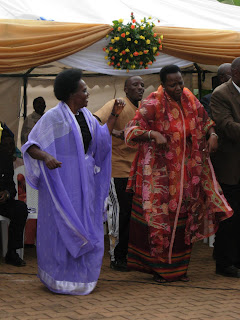
Visiting the travel doctor before leaving for a foreign country can be an unnerving experience. At the top of my doctor’s list of “things not to do” was eating food on the side of the road. Back home, this didn’t seem like it would be a challenge. I’ve never been one for hot dogs sold on the sidewalks of Toronto.
In Uganda, my regular food consumption standards don’t apply. The food sold on the side of the road is abundant. Turns out its also delicious, although it took me a couple of weeks to catch on to this.
I spent my first week politely avoiding food that I didn’t recognize. As a result, I ate a lot of fruit, bread and Wheatabix. Not a bad combination, but one can only go so long without vegetables or protein. In time, I discovered some restaurants that catered to ex-pats and began to eat grilled tilapia, sandwiches and salads. But these cafes were expensive. At 15,000shs ($8) per meal, I knew I was being gouged.
I gradually began my descent into a full-blown Ugandan diet at the Monitor, where they serve a midday buffet. For 1,000 shs ($0.60), the lunch was a steal. Especially when you consider the amount of food piled onto the plate. The four servings of starch, two servings of protein and one serving of vegetables (two if you’re lucky) form a heap on the dish. There is always matooke (steamed savory bananas that look like yellow mashed potatoes), rice, posho (maize flour mixed with water and steamed, very little flavor). For protein, beans are a must and often chicken, fish or beef is stewed and served alongside. On special days they serve cow intestines. I have still not mustered the courage to try them. These are too appropriately dubbed offals, pronounced 'awfuls.' Then for vegetables there is green beans or mini-eggplants that look just like the ones back home but have a slight bitter taste.
The meal is cheap, but not the tastiest. Either way, it was enough to carry me though the day and avoid spending money on dinner. That is, until I finally embraced the street food. Hands down, it is the best tasting and the cheapest grub in the city. I am fortunate enough to live in Ntinda neighbourhood, where vendors line the streets to sell dinner to people on their way home from work. Since moving into the area in July, I have come to love my Ntinda menu. Here’s a sampling:
Specials of the Day
Gonja………………………………………………………………………400 shs ($0.30)
Grilled plantain bananas. Served warm – choose crispy or mushy.
Kasooli.…………………………………………………………………....300 shs ($0.20)
Grilled maize. Looks like corn on the cob, but less sweet and heartier. When cooked to a crisp, tastes just like popcorn kernels.
Grilled chicken…………………………………………………………..2,000 shs ($1.20)
Breast or leg. Grilled to perfection.
Liver skewers........................................................................I think they’re 500 shs ($0.30)
I’ve never been one for liver so I’ve not tried these grilled sticks of meat. Ugandans love them.
Grilled goats meat………………………………………500 – 1,000 shs ($0.30 - $0.60)
Goat is big here. They roam around in residential areas and are on almost every menu. The meat is tender and fatty.
Samosas…………………………………………………………..Two for 500 shs ($0.30)
Veggie or beef. Wrapped in newspaper and eaten on the go. The best I’ve ever tasted in my life.
Chapati……………………………………………………………………..200 shs ($0.12)
A Ugandan staple. Like a tortilla, but more delicious. Fried in oil and used to slop up beans or meat stews. Also good plain.
Rolex……………………………………………………………………….400 shs ($0.30)
An egg fried in a rolled chapatti and served hot. Delicious.
Popcorn…………………………………………………...500 – 1,000 shs ($0.30 - $0.60)
Freshly popped and sprinkled with salt. Surprisingly filling.
Roasted g-nuts
We call them peanuts back home. Call them whatever you want, they’re wonderful.
Fresh fruit, sliced………………………………......………300 – 500 shs ($0.20 - $0.30)
My favorite. Pineapple, watermelon, mango or papaya. The fruit here will blow your socks off.
Bon appetit!










